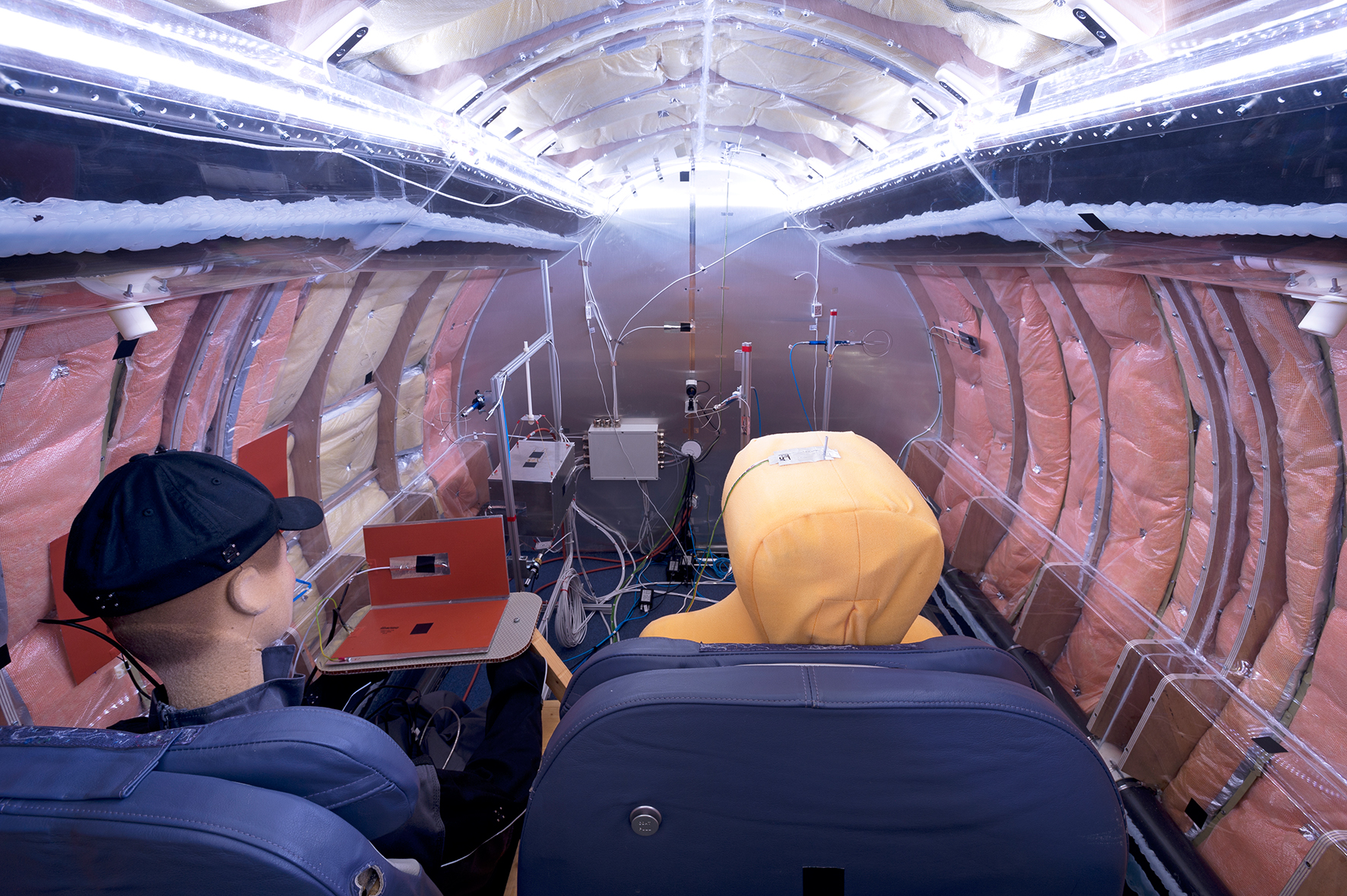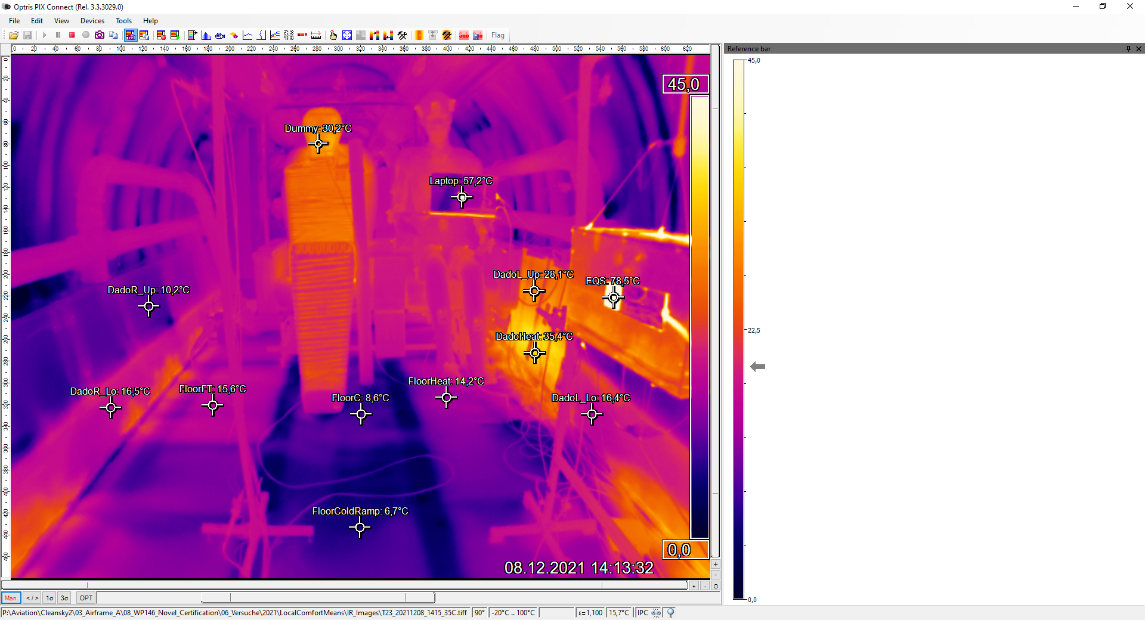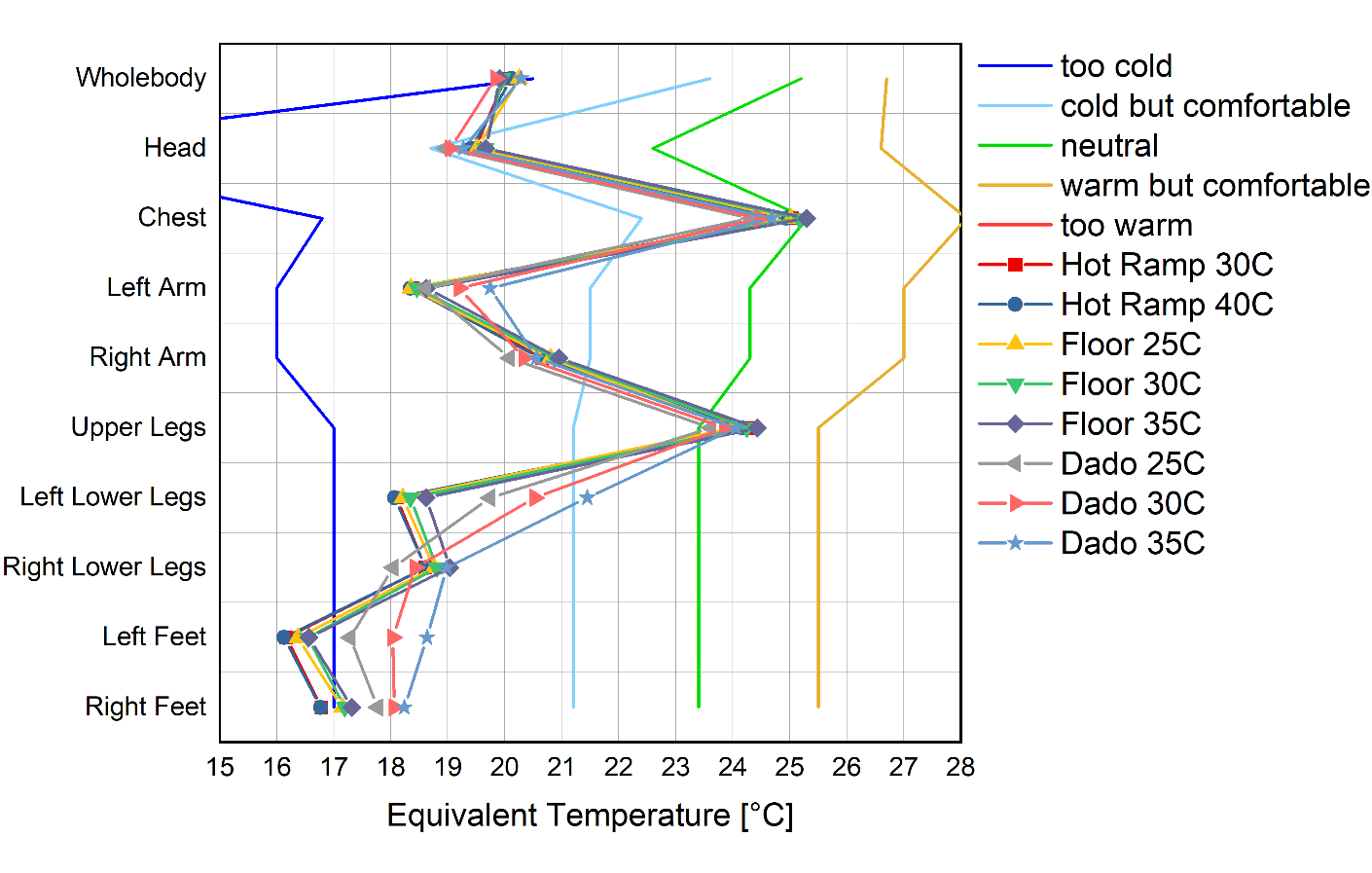What impact does the thermal bridge at floor level in an aircraft have on thermal comfort?
How does solar radiation affect the way comfort is perceived inside the aircraft?
What happens inside the cabin if the air-conditioning system fails, and the air temperature outside is cold?
These and other questions can be studied in the business jet mock-up at the Flight Test Facility, Fraunhofer IBP's flight laboratory. Different measurements are performed to validate indoor climate models, thus enabling answers to these and other questions to be predicted in the future with the help of simulation. These simulations are particularly used in extreme thermal cases such as extreme heat or cold, where test persons cannot be used.


